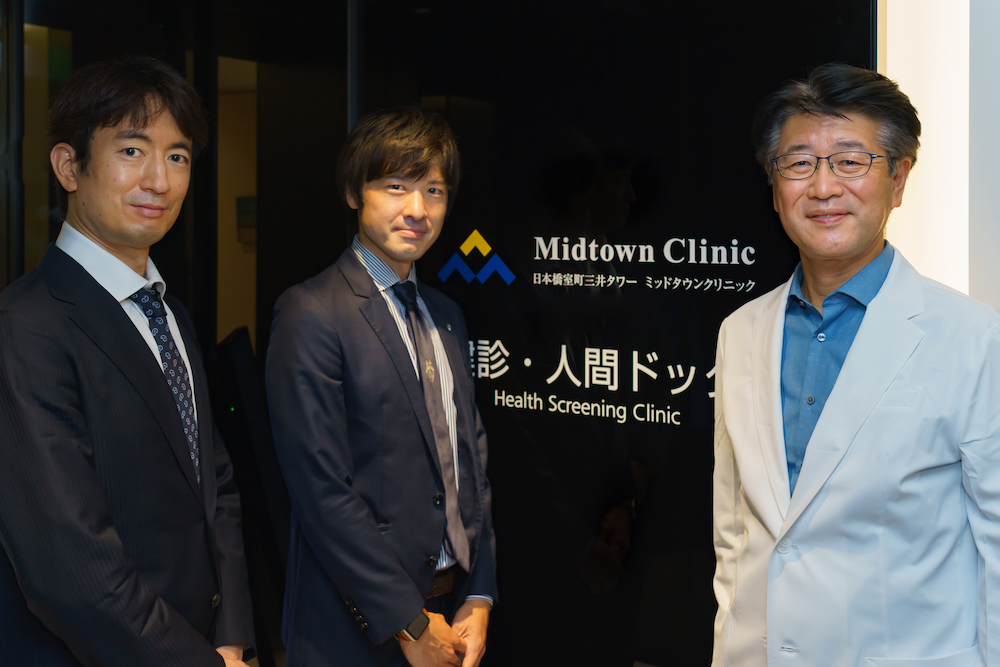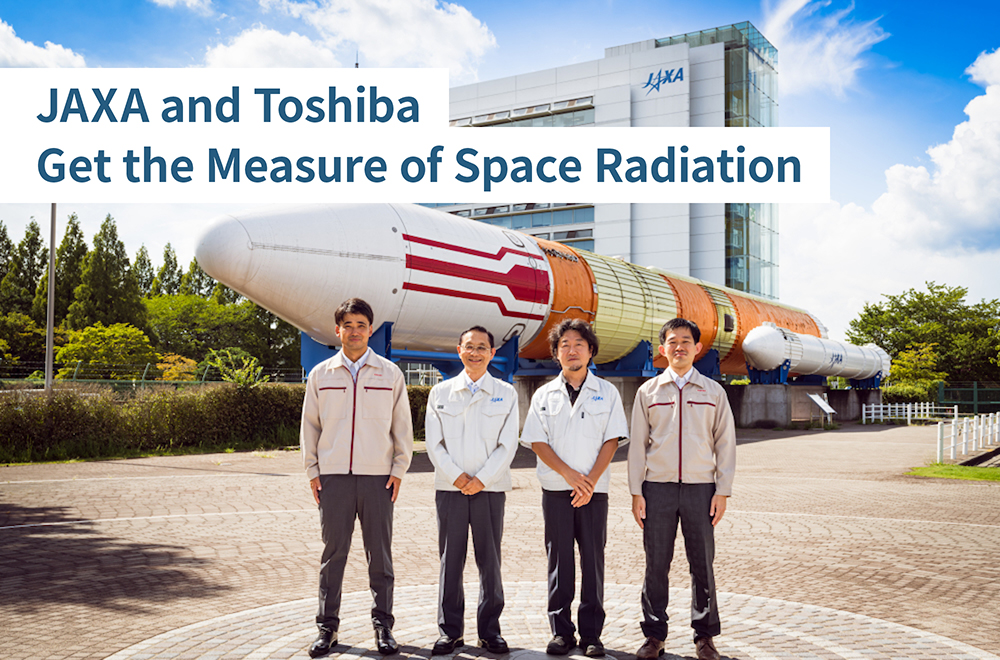Worried About Your Future Health? Toshiba’s AI Technologies Can Predict Your Risk of Developing a Lifestyle Disease (Part 2)
2020/11/11 Toshiba Clip Team
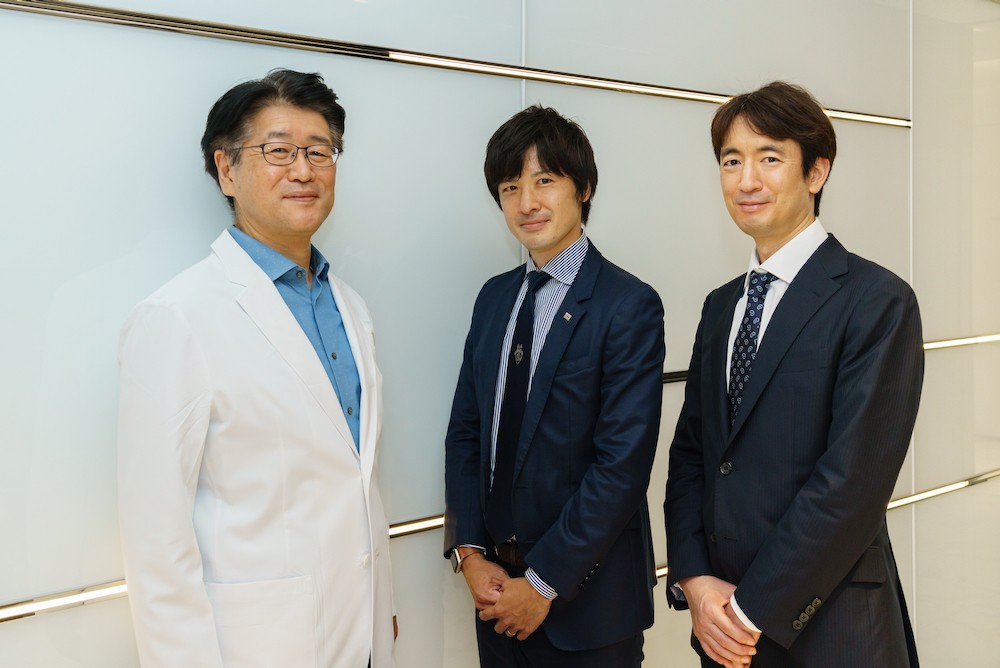
Have you ever wondered, “If I keep living the way I am, what diseases am I at risk of developing and when?” and “What can I do now to prevent developing a disease in the future?” Toshiba is working to address such questions by mobilizing three of its strengths: artificial intelligence (AI) technologies developed through research spanning more than 50 years, the expertise to create value by analyzing extensive data gathered in manufacturing over more than 140 years, and the ability to develop agile software. Part one of this two-part edition laid out a near-future vision of healthcare in which an AI can predict and visualize when a person’s health habits will turn into a lifestyle disease. This second part features the technological aspects of how the AI was developed and how it hopes to impact society.
Toshiba’s AI Technologies Are Developed and Refined in the Lab and Manufacturing
In Worried About Your Future Health?: Toshiba’s AI Technologies in Manufacturing Can Predict Your Risk of Developing a Lifestyle Disease (Part 1), Dr. Junichi Taguchi, Director of Tokyo Midtown Clinic in Nihonbashi Muromachi Mitsui Tower, explained how the use of AI for prediction of risk of lifestyle diseases can transform and personalize healthcare to the needs of each individual, based on their medical check-up data. Taihei Yamaguchi from the Corporate Technology Planning Division at Toshiba Corporation also explained how the AI produces visuals based on check-up results. These visuals show when a person’s health condition will reach a level that requires a warning and when it will reach a point that is deemed to be dangerous (at which point the person would be diagnosed with a lifestyle disease).
Working with the vision proposed by Dr. Taguchi and Yamaguchi is Kosuke Haruki from the Corporate Research & Development Center (R&D Center) at Toshiba Corporation, who is undertaking the R&D of the AI that is key to bringing the solutions to life. Haruki conducted mathematical research at graduate school and became a software researcher after joining Toshiba. Building on his experience of utilizing AI technologies at manufacturing sites, he is now engaged in the R&D of AI for prediction of risk of lifestyle diseases and the AI that calculates what lifestyle habits must be changed to stay healthy. According to Haruki, Toshiba’s Cyber-Physical Systems (CPS) technology form the bedrock of the AI R&D. CPS technology is a mechanism that enables real-world data to be analyzed in a cyber-realm and then returned to the physical world through a feedback loop as new information or knowledge to create value. Haruki comments,
“Toshiba has over 140 years of experience in manufacturing and a build-up of over 50 years of AI and R&D knowledge. Using the enormous amounts of data produced at manufacturing sites to develop AI technologies is a common practice for us. The key to this project is likewise figuring out how, and what sort of AI technologies should be applied to the vast volumes of data taken from the medical check-ups of several hundred thousand people, spanning years. So we are able to draw on our past experiences and Toshiba’s knowledge. At Toshiba, it’s not just the researchers who possess knowledge of AI development. The people working in the field are also important contributors.”
To illustrate his point, Haruki recalled an occasion at the R&D Center Exhibition, where researchers presented their research results to members of Toshiba Group. When he presented the topic on AI for prediction of risk of lifestyle diseases, employees from various different fields understood its usefulness and mechanism, which led to many lively discussions on how the solution could be utilized. During the same event, an industrial physician working for Toshiba said, “This solution will allow us to guide patients based on each of their unique circumstances. It’s always been a struggle trying to get patients to change their lifestyle habits and behavior, so I hope we’ll be able to use this soon.” Such discussions and comments that captured the essence of the AI ignited an interest in Haruki to turn the research into a practical solution, which in turn accelerated the development.
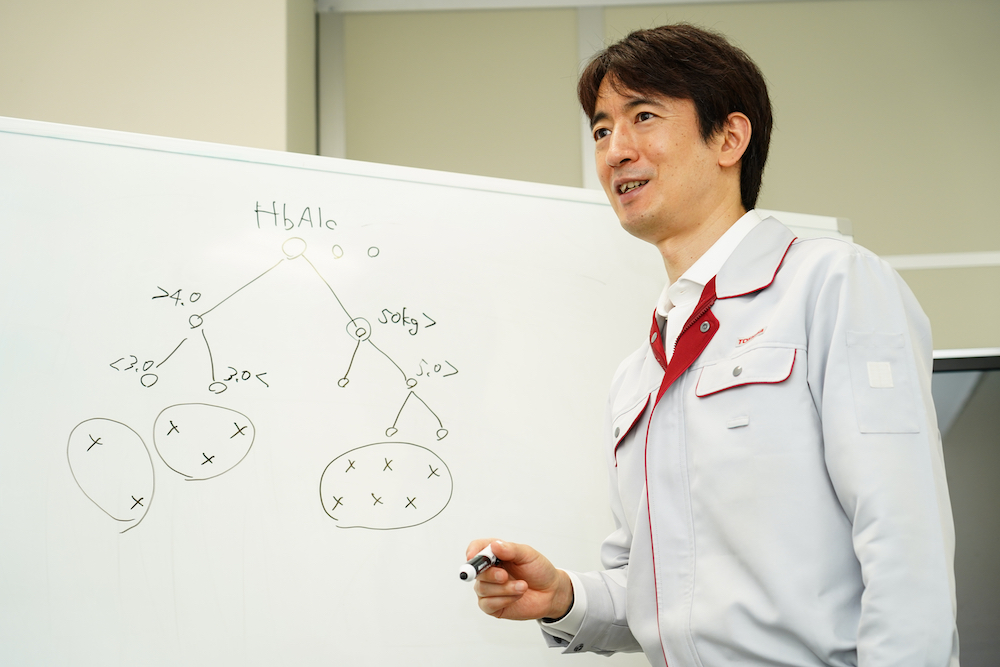
Kosuke Haruki, Fellow at the Analytics AI Laboratory, Corporate Research & Development Center, Toshiba Corporation
Let’s take a look at how Haruki developed the AI for prediction of risk of lifestyle diseases. From the health insurance claims* provided by the Toshiba Health Insurance Association, he first identified employees who used to be healthy and were not taking any medication. He gathered data from their medical check-ups at the time, such as how often they consumed alcohol, their weight, blood pressure and other probability of developing the disease. He then combined that set of data with data from the same people that were taken when their test values rose from being healthy to reaching a danger level, at which point they were diagnosed with having a lifestyle disease. This allowed Haruki to enhance the accuracy of the AI’s ability to predict whether a healthy person may develop a disease at a later stage. In other words, as the input he uses various data from medical check-ups of when a person is healthy and as the output uses probability of developing the disease that have reached danger levels. To enhance precision, Haruki turned to AI technologies that are used for detecting defects during the semiconductor manufacturing process and applied prediction models most appropriate depending distributing vast amounts of data. This gave each health factor related to lifestyle diseases—such as alcohol consumption frequency and weight change over the past year—the ability to make predictions, allowing the AI to calculate the risk (%) of developing lifestyle diseases over the next one to six years. Determining the best prediction model required extensive calculations, which were done with parallel distributed processing using many CPUs to conduct mass calculations, and by applying mathematical algorithms to optimize each calculation.
*Monthly statement of medical expenses, such as for prescriptions, that medical institutes submit to health insurance associations.
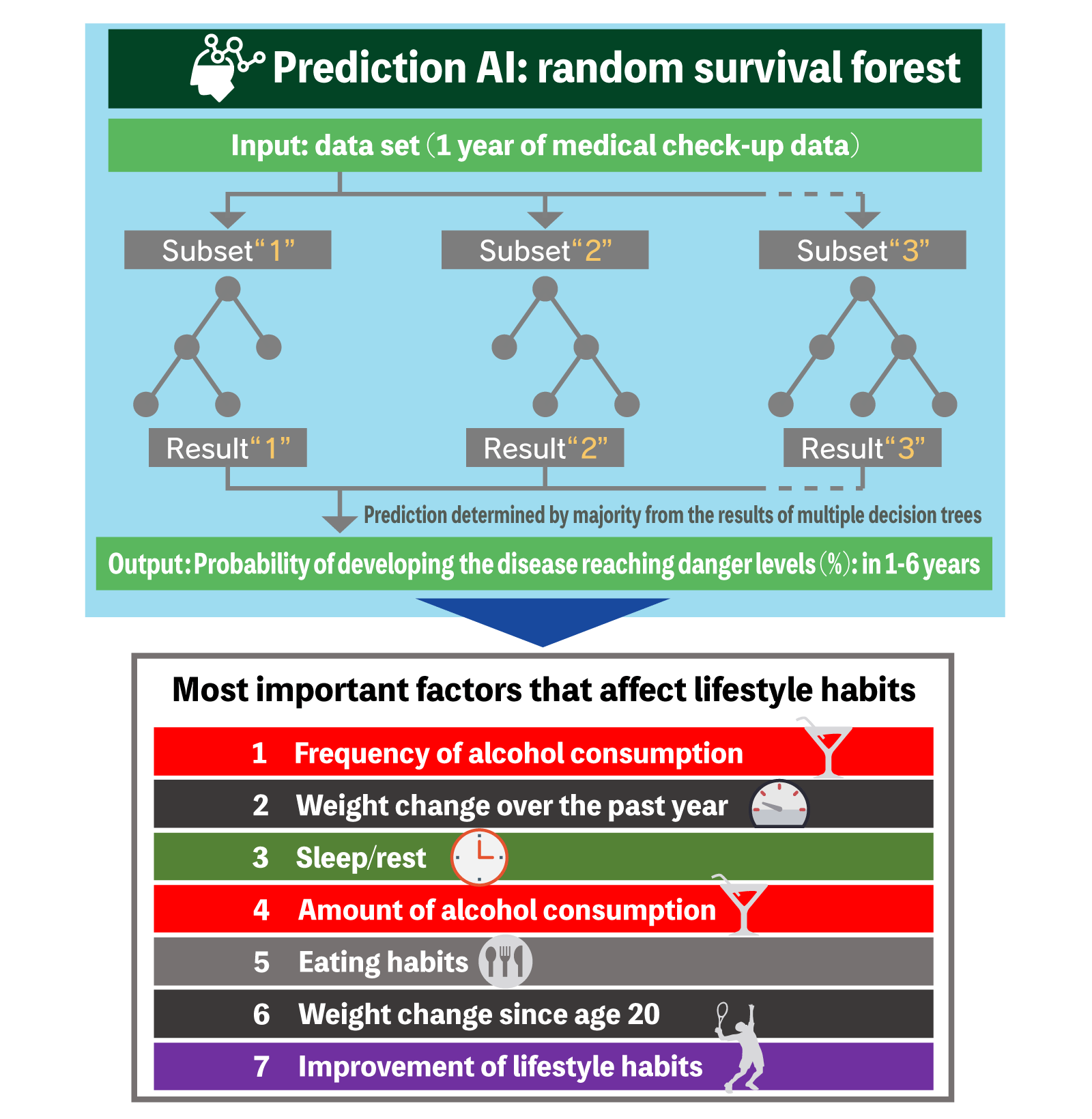
Illustrated explanation
Haruki’s efforts did not end there. Since an AI learns everything according to the data provided by humans, he needed to prepare the input and output data appropriately. To do this, Haruki drew on Toshiba Group’s expertise for detecting repetitions and mistakes and deleting and correcting data. This allowed him to smoothly prepare the data sets. He also had to pay close attention to labeling the data that would determine which conditions are considered a disease. He repeatedly consulted the physicians and nurses in the field to shape the AI in a way that matched the solution’s intended purposes. Just as he did for software R&D, Haruki strived to work quickly by creating a prototype, sharing it with professionals in the field to verify and then making necessary changes for the next prototype. In this way, he ultimately achieved an AUC value of 0.96*. When the completed Toshiba solution produced the same level of accuracy using data from Tokyo Midtown Clinic, Haruki said he was honestly relieved and that it’s now a step closer to being released to the public.
*AUC value: 100% prediction accuracy has a value of 1.
Expanding the Benefits of AI for Prediction of Risk of Lifestyle Diseases
Tokyo Midtown Clinic and Toshiba are currently conducting an experimental study on whether this solution actually encourages patients to change their habits. Dr. Taguchi has high expectations, saying, “By using Toshiba’s AI technologies, we’ve been able to take the communication between physicians and patients to a new level. Physicians can now focus on doing check-ups that are more personalized to the needs of each patient based on a standardized foundation created by the AI, such as with accurate data analyses. This makes it possible to conduct treatments that are more efficient and effective than before. This is a new form of healthcare that merges digital technology and medical expertise. I strongly believe we can use this experimental study as a starting point to disseminate this solution and raise the overall quality of Japan’s medical practice.”
Furthermore, Dr. Taguchi believes that adding more data to the analysis, such as the patient’s DNA information and family medical history, will further increase the accuracy of the AI’s prediction. Utilizing DNA information for treatments that are designed for Japanese people and adopting a multifaceted approach, even taking family medical history into account, is nothing short of tailor-made healthcare. Dr. Taguchi also emphasized the following,
“To change a patients’ lifestyle habits, we have to focus on his or her behavior outside the doctor’s office too. If, in addition to this solution, we could create another one that gives people everyday lifestyle advice, such as for eating and exercising, we’d be able to further lower their risks of developing a disease. I think that’s something to think about in the future.”
Dr. Taguchi adds that the significance of this kind of solution reaches beyond just medical examinations.
“It goes without saying how important it is for patients to improve the quality of their lifestyles and avoid developing diseases. If the number of healthy people increases, slowly but surely, we’d be able to reduce healthcare costs throughout Japan. Furthermore, companies recognize that avoiding health challenges leads to improved productivity among individual employees, so this is viewed as a critical topic in terms of vitalizing the organization as a whole too. In addition to cutting down on healthcare costs, I believe Toshiba’s AI technologies can help companies to continue creating social value.”
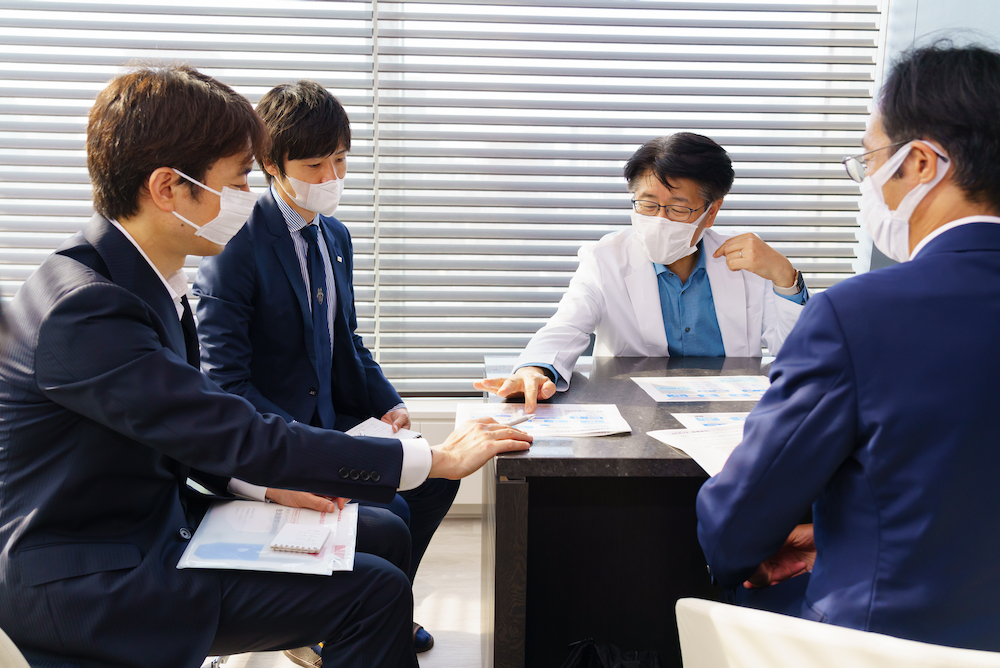
As Dr. Taguchi pointed out, Toshiba is currently researching and developing a solution that would add DNA information to enhance the accuracy of AI for prediction of risk of lifestyle diseases. If successful, this would allow physicians to further personalize the guidance they offer to their patients to change their lifestyle habits. Furthermore, Toshiba is conducting joint research with Kanazawa University on a common topic—the visualization of risks—to visualize the risk of requiring dialysis treatment due to diabetic kidney disease. On another front, Toshiba is also working with Johns Hopkins University in the US to develop and apply an AI that can predict the risk of developing heart disease.
Yamaguchi’s vision extends far into the future. He says, “As a company that provides not just AI technologies but also social infrastructure services, I want to create values that can be fully integrated into the social system.” Haruki adds, with a look of determination, “I’m always thinking about the practical application of our R&D and I’m also passionate about creating technological innovations that can offer new values to society.” Their thoughts are a direct reflection of Toshiba’s philosophy of being Committed to People, Committed to the Future. The company’s experience and knowledge accumulated over more than 140 years in manufacturing, and its world-class AI technologies, will turn their visions into reality.
![]()






